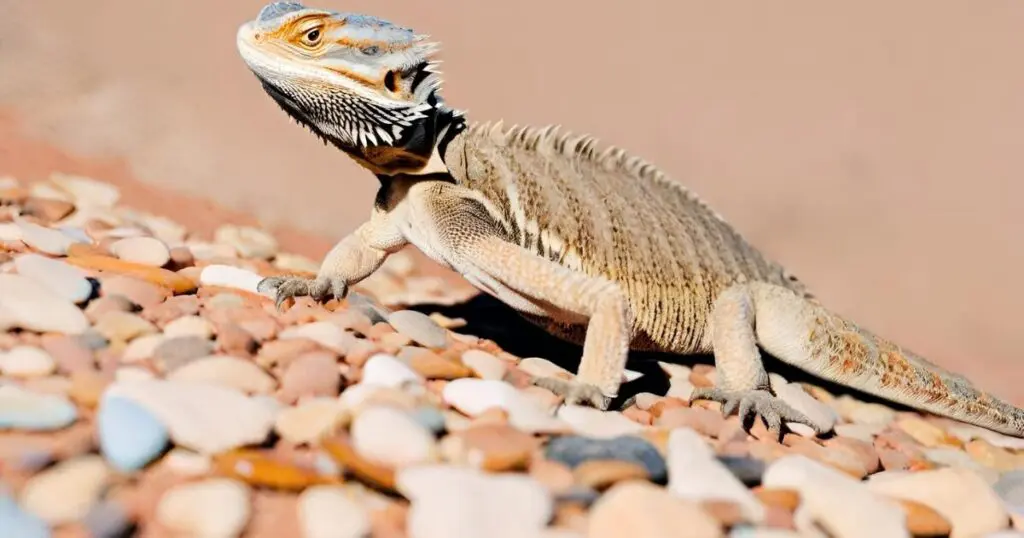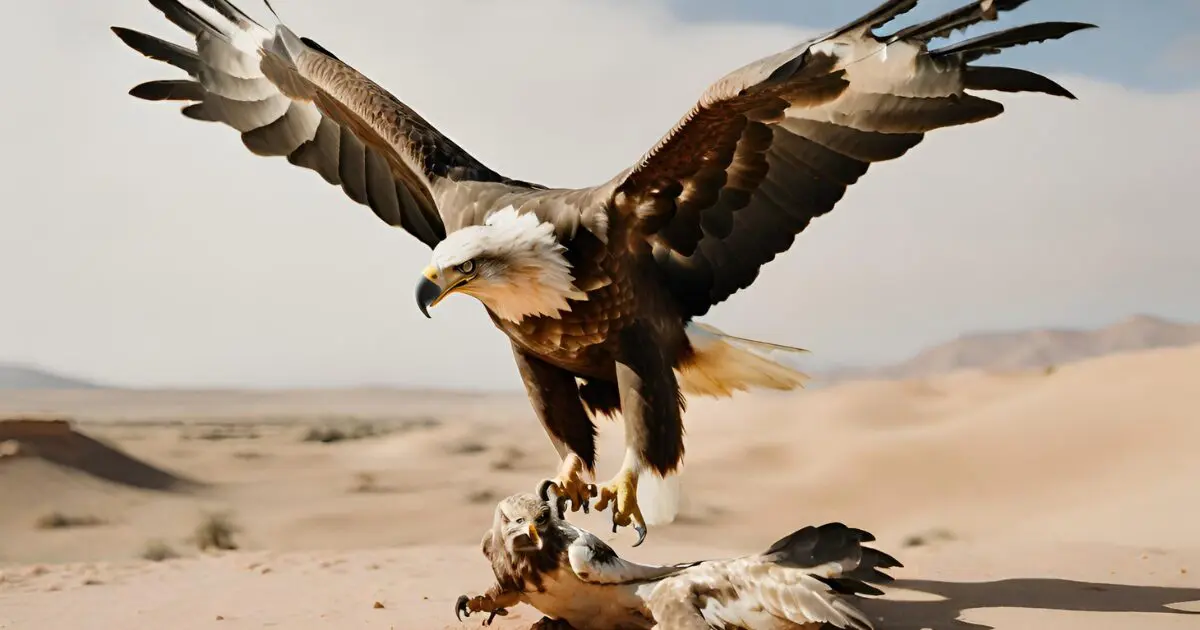Bearded dragons origin is rooted in Australia. These cute reptiles were only available in the land of kangaroos till the 1990s. However, time has changed significantly. Where do bearded dragons live now?
Bearded dragons are still found across Australia! They live in dry areas like deserts, woodlands, and even some grasslands. They’re good at adapting to different habitats. These lizards are also widely found across North America. However, they are banned in Hawaii.
Let’s find out more about the natural bearded dragon habitats. It will help you to mimic the environment at home and help them grow properly.
Where Do Bearded Dragons Live in Australia
Australian mainland are the natural habitat of bearded dragons. This reptile creature is highly adaptive and can live in various environments. In Australia, you will find them in deserts, woodlands, and even some grasslands.

However, the most favorite areas to live for beardies are the dry areas. Bearded dragons are cold-blooded reptiles. Hence, they rely on external heat sources to regulate body temperature. Dry environments offer enough sunshine and perfect basking places to live happily.
The deserts in Australia often have sparse vegetation. It makes it easier for them to spot prey and avoid predators. You must include a basking spot in your DIY bearded dragon enclosure.
1. What Does A Bearded Dragon Eat in the Desert?
Bearded dragons’ diet in the desert mostly consists of insects. They can eat various kinds of insects, including crickets, earthworms, mealworms, etc. They are opportunistic feeders and will eat any insects they can put into their mouths.
Bearded dragons benefit from insects in two key ways. The first is hydration, and the second fact is nutrition. Insects are a rich source of protein, essential for growth and repair. Additionally, beardies get most of their water from food.
2. Challenges Bearded Dragons Face in Australia
Though hot weather suits bearded dragons, it comes with unique challenges. One major concern is limited water availability. Bearded dragons get most of their hydration from food. This adaptation plays a crucial role in their survival.
Another challenge is the hot midday sun. Bearded dragons have learned to handle it long ago. They bask in the morning sun to absorb the necessary heat and take shelter during the hot time of the day. They find shelter under rocks, bushes, or in their burrows to avoid direct sunlight.
Another interesting fact about bearded dragons is that they can change their color. Though it is not a dramatic change, it helps reflect some of the heat. They can slightly lighten their beard to reflect sunlight.
3. Predators Bearded Dragons Face

In Australia, bearded dragons face a variety of predators. Birds of prey like kites and eagles snatch them from above. On the ground, they’re preyed upon by larger reptiles like goannas and snakes. Introduced mammals like feral cats and foxes also pose a threat.
Bearded dragons use a combination of bluff and escape for defense. They intend to appear larger than the actual size. How do they do it? Through the following behaviors:
- Puffin out their beard
- Gaping their mouths
- Darkening their throat
Bearded dragons also have the ability to change color to blend in with their surroundings. If these tactics fail, they’ll resort to running away on their short legs. Despite their small size, beardies can run quite fast, up to 9 mph. Moreover, their color helps them often get blended into the sand and take camouflage.
4. Bearded Dragons Are Not Seen Everywhere
Don’t think that beardies can be seen anywhere and everywhere in Australia. No, that is not the case. Bearded dragons are absent from very wet areas and the island state of Tasmania. Though they can swim a little, beardies tend to avoid such places.
Why Do Bearded Dragons Choose Hotter Places?
Bearded dragons thrive in hotter places because they are cold-blooded lizards. They need external heat to regulate body temperature. Other reasons for living in desserts include the following:
- Basking in the sun allows them to raise their internal temperature. Sunlight also plays a role in their digestion.
- Warm temperatures make them more active for hunting, digestion, and mating.
- Females require higher temperatures for egg development and successful breeding. Hotter environments ensure optimal conditions for offspring survival.
- Basking helps bearded dragons stay alert and vigilant. It allows them to spot predators and react quickly.
Bearded Dragons’ Contribution to the Australian Ecosystem

There is a reason why Australia banned the export of bearded dragons. It has a crucial role to play in maintaining a balance in the ecosystem. Here’s how they contribute:
- They eat insects and help control insect populations and prevent them from reaching outbreak levels. Thus, they also help in saving vegetation.
- Bearded dragons occasionally consume fruits and seeds. They travel, poop, and the seeds get deposited in new areas. This way, they aid in plant dispersal and promote diversity.
- Bearded dragons themselves become prey for various predators. They are the favorite food of Kites, Eagles, Goannas, feral cats, and foxes.
- Bearded dragons dig burrows for shelter and egg-laying. This burrowing activity helps aerate the soil and improve drainage.
How Did Bearded Dragons Reach the United States?
Bearded dragons aren’t native to the United States. They are popular as pets, but they were not seen in the USA before the 1950s. So, how did these popular pets end up across the ocean? Here’s the long story in short:
- Bearded dragons definitely didn’t swim or fly themselves to the US! Their arrival is entirely due to humans. They were brought and, in most cases, smuggled to the United States.
- The popularity of bearded dragons as exotic pets exploded in the late 20th century. They were imported from Australia. However, soon the country banned the export.
- Thankfully, bearded dragons breed readily in captivity. This means most pet bearded dragons in the US today are actually captive-bred, not wild-caught imports.
- The US now has a well-established population of pet bearded dragons. Thanks to the successful captive breeding programs. Some of them may escape the enclosures, but the climate is not suitable for them to establish a wild population in most areas.
Can I Get a Bearded Dragon from Australia?
Unfortunately, obtaining a bearded dragon directly from Australia is not possible. Australia has strict biosecurity laws to protect its native wildlife. It includes our beloved bearded dragons. There can be some exceptions, like sending them to international zoos, but not for private collection.
Bearded dragons are an important part of the Australian ecosystem. Allowing unregulated exports could disrupt their natural populations.
The good news is you can find healthy bearded dragons readily available in other countries. And thankfully, the USA is one of those countries. You could also consider adopting a bearded dragon from a rescue organization. This gives a loving home to a pet in need.
FAQ
A few more information that might come in handy for you at times.
Q: Do bearded dragons live in the forest?
Bearded dragons aren’t typically found in dense forests. They prefer drier areas like deserts, woodlands, and scrublands. These places offer them enough sunlight for basking. They can also climb trees, but forests or jungles are not their main habitat.
Q: Can bearded dragons survive in the US wild?
No, bearded dragons wouldn’t survive well in the wild US. The climate isn’t hot enough year-round. Besides, they lack the natural predators they coevolved within Australia.
Q: Can I travel with bearded dragons?
You might be able to travel with your bearded dragon, but it requires careful planning. Talk to your vet and research temperature control, secure transport, and regulations.
Conclusion
You now know where do bearded dragons live. They need warmer weather to survive. If you can give them the right environment and the right diet, then they can survive up to 15 years in captivity.
Add UVB light to create basking spots in their enclosures. At the same time, make sure they are getting some sort of sunlight. This ensures beardies stay healthy, strong, and active.
Sources:
- https://wildlifeimages.org/species/bearded-dragon#:~:text=Pogonas%2C%20or%20more%20commonly%20referred,every%20pet%20store%20in%20America.
- https://www.avianexoticvetcare.com/handouts/reptiles/bearded-dragons.pdf
- https://arborviewah.com/wp-content/uploads/2021/03/Bearded-Dragon-PDF.pdf
- https://www.zoocheck.com/wp-content/uploads/2019/12/Quick-facts-about-some-common-reptile-pets.pdf
